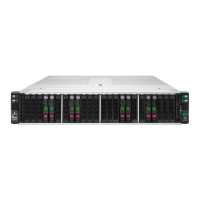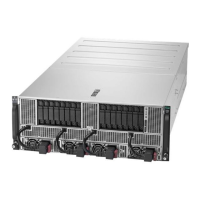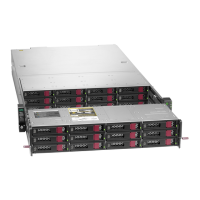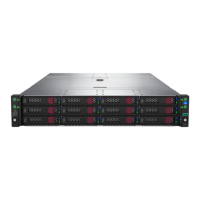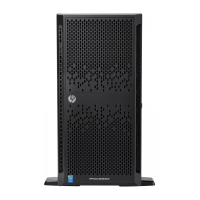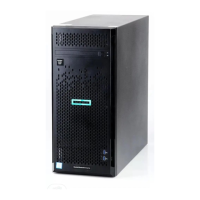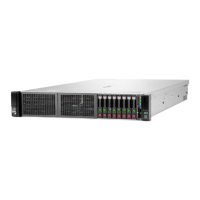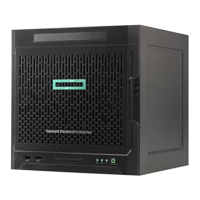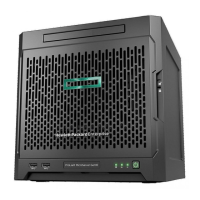Setup 66
• Node 4: drive bays 19 through 24
Twelve drive bays are allocated to each 2U node.
• Node 1: drive bays 1 through 12
• Node 3: drive bays 13 through 24
For node numbering, see "Chassis rear panel components (on page 10)."
For drive bay numbering, see "HPE Apollo r2800 Chassis drive bay numbering (on page 20)."
Mapping drive bays
CAUTION: Before mapping any drive bays, note the current configuration. Any changes to
the drive bay mapping configuration where there are any drives set up in a Smart Array RAID
configuration could cause data loss.
IMPORTANT: The HPE Apollo r2800 Chassis does not support nodes using the HPE
Dynamic Smart Array B140i Controller or the HPE P840 Smart Array Controller. Hewlett
Packard Enterprise recommends installing an HPE H240 Host Bus Adapter or HPE P440
Smart Array Controller.
For detailed information and examples on drive bay mapping configuration changes in the HPE Apollo
r2800 Chassis, see the HPE iLO 4 Scripting and Command Line Guide on the Hewlett Packard Enterprise
website (http://www.hpe.com/info/ilo/docs).
To map drives in the HPE Apollo r2800 Chassis:
1. Determine which drive bays to map to each node.
2. Using Integrated Lights Out (iLO) administrator login credentials, use a script that includes the
READ_BACKPLANE_INFO command to get the current mapping information from the HPE Apollo
r2800 Chassis.
3. Build an XML script to map the drive bays.
4. Using a script that includes the READ_ZONE_TABLE command, verify the changes to the zone
table. The drives can also be labeled to clearly show the drive bay mapping configuration.
5. Power down the nodes ("Power down the node" on page 32).
IMPORTANT: All nodes must remain powered off for at least 5 seconds after executing the
configuration changes.
6. Power up the nodes (on page 32).
Registering the server
To experience quicker service and more efficient support, register the product at the Hewlett Packard
Enterprise Product Registration website (http://www.hpe.com/info/register).
